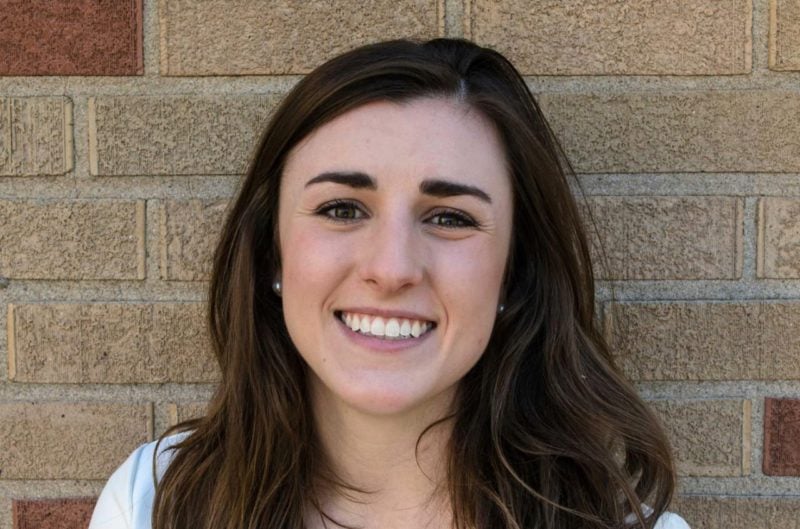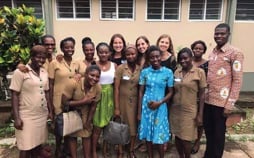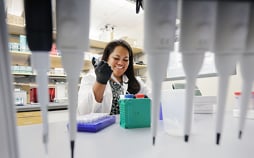Searching for a Cure in Russian
After learning about her family history of cancer, Emily Hoskins knew that she wanted to use her Russian and bioinformatics skills to find a cure.
October 2016

Working alongside faculty mentors in the College of Life Sciences, Amanda Gier was part of a team of students that recently made a discovery about the role the body’s immune system plays in exercise recovery.
Gier and Kaitlyn Evans, another undergraduate, coauthored a paper on the “repeated bout” effect—the phenomenon of reduced muscle soreness following repeated physical activity.
Specifically, they produced evidence that T-cells—traditionally thought of as infection fighters—are present in muscle in response to exercise-induced damage. The research appeared in Frontiers in Physiology and builds off past studies that implicate immune cells in muscle healing.
Exercise sciences assistant professor Robert Hyldahl, Gier’s mentor in the lab, described watching her try and try again as she sought to identify the influence of T-cells on muscle regeneration. “Eventually,” he says, “she worked at it hard enough that she got it to work. That was a really cool moment.”
Gier, who is now headed to graduate school, is another example of BYU providing undergraduates a leg up through hands-on learning. “I really like that about BYU,” Hyldahl says. “BYU puts a lot of resources and funding toward mentoring undergrads.”
Related story: /byu/news-features/of-muscles-and-mentoring.html

After learning about her family history of cancer, Emily Hoskins knew that she wanted to use her Russian and bioinformatics skills to find a cure.

After seeing people on her mission suffer from health problems, Naomi Rhondeau changed her major to find ways to help more people.

Soon after graduate student Justina Tavana began studying Alzheimer’s disease, she discovered that many Pacific Islanders lack the tools to accurately identify the disease.